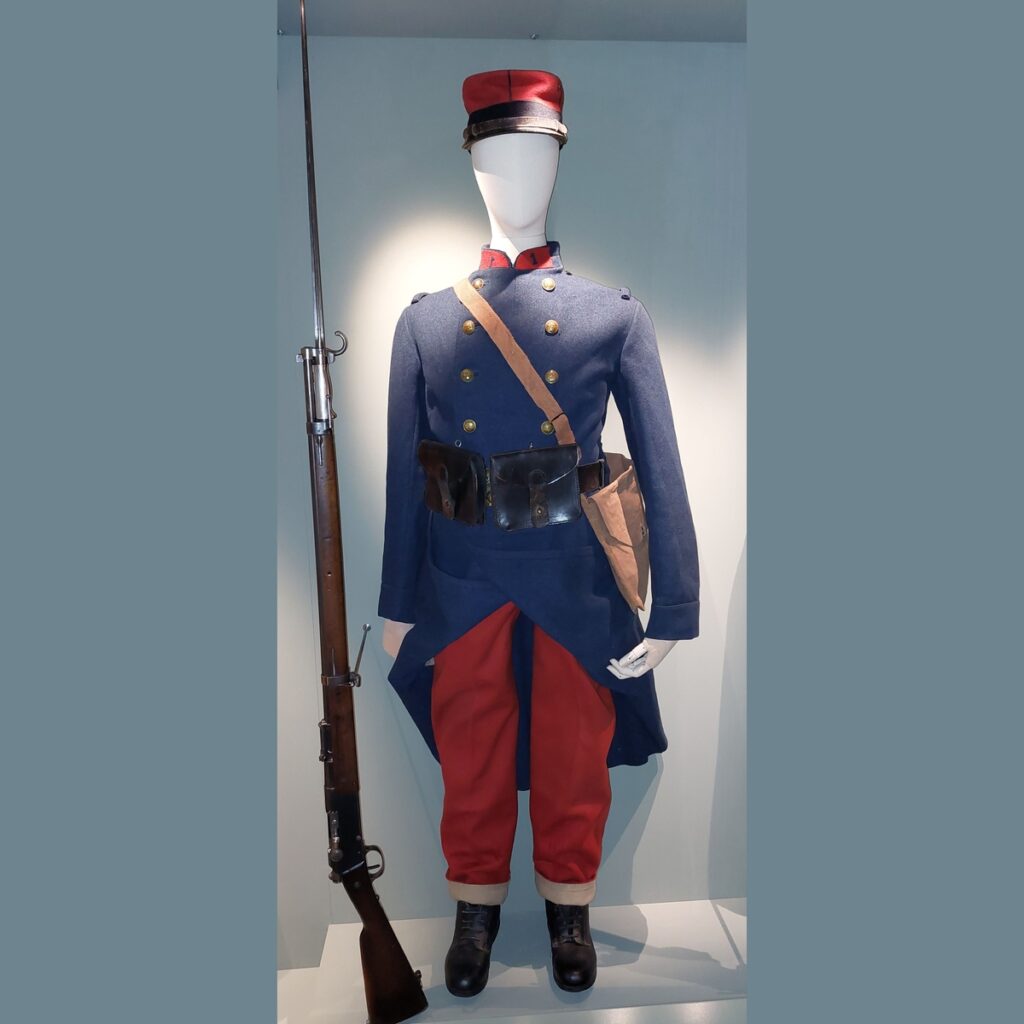
03 France
Fotogalerie

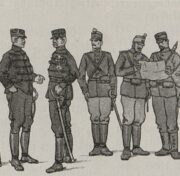
System: Republic
Head of state: President Raymond Poincaré
Land: 6,484,243 square kilometres (including colonies)
Population: 90,110,753
Military expenditures: 31 % of the total state expenditures in 1913
Military forces during peacetime: 637,655 men
Entry into the war: 3 August 1914 on the side of the Entente
Total mobilised by the end of the war: 8,100,000–8,410,000 men
The headwear is a model 1884 kepi. This cap was used for training and in the field. The symbol of the Foreign Legion, a burning grenade, is sewn on the brim. In the field, a protective dark cotton cover was worn over the cap. Off duty, a simple dark blue boat cap was worn. The double-breasted dark blue cape is an 1877 model. The number sewn on the collar indicates the owner’s affiliation with the 1st Regiment. The coat was worn on duty in summer and remained in the Foreign Legion’s equipment until 1916, when it was replaced with a more practical brown uniform. Model 1893 trousers were made of red woollen cloth. Various camouflage trousers and trousers of a civilian origin were later used in the field as the bold red colour was not appropriate for the conditions of modern warfare. Nevertheless, they were still in use in the spring of 1915. The basis of the outfit was a belt with ammunition for the Lebel rifle. It includes a belt and model 1892 Y-shaped auxiliary straps, used to better distribute the model 1905 ammunition pouches. On left side of the belt is a bayonet for the model 1886 Lebel rifle. All leather fittings were painted black at the beginning of the war. A model 1892 satchel containing rations, tobacco, eating and personal items hangs on the left side.
Aktuálně
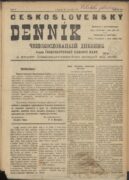
Československý deník sehrál v životě legionářů v Rusku velmi důležitou roli. Poprvé vyšel v prosinci 1917

Děkujeme za podporu pro válečné veterány. Sbírka DiGiMÁK vynesla 450 tisíc korun
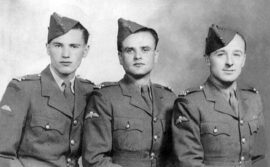
Tak trochu zamrzlé spojení
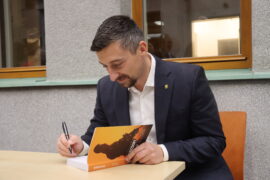
Válečný veterán Petr Matouš pokřtil v Armádním muzeu Žižkov svou knihu. Patronkou je i ministryně obrany Jana Černochová








